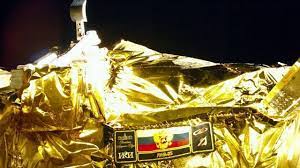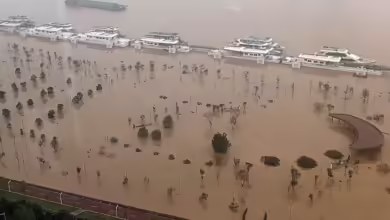Luna-25, a Russian moon mission, fails to enter pre-landing orbit; situation being assessed
After encountering an incident, the Russian lunar lander Luna-25 was unable to enter its pre-landing orbit of the moon on Saturday, August 19. It is now unknown whether the Russian spacecraft will be able to carry out its goal to arrive on the south pole of the moon on August 21 while the crew evaluates the present scenario.
The effort to place Luna-25, the country’s first lunar lander in over 50 years, into orbit on Saturday failed because of a bug, according to a statement from the Russian space agency Roscosmos.
The Luna-25 mission had already released its preliminary findings, which Roskosmos was analyzing. The third-deepest crater on the moon in its southern hemisphere, Zeeman, was also captured on camera by the probe. The source that posted the photographs said that the Zeeman crater had a 190 km (118 miles) circumference and a depth of 8 km (five miles).
The information Roskosmos has so far acquired regarding the chemical components of the lunar soil. The data, according to the agency, would also make it easier for equipment to operate that was intended to examine the moon’s near-surface. It continued by saying that its tools had recorded “the event of a micrometeorite impact.”
The Luna-25 was the first Russian spacecraft to circle the moon since 1976 when it did so on Wednesday. The spaceship is almost as big as a compact car. The Luna-25 is expected to run on the south pole for a full year, according to Roscosmos.
In the meanwhile, Chandrayaan-3, an Indian lunar mission, successfully lowered the orbit of the project’s Lander Module (LM), bringing it even closer to the moon, ISRO said on Sunday. Prior to landing on the south pole of the moon on August 23 in the evening, the Lander Module will next go through internal inspections. Vikram the Lander and Pragyan the Rover make up the Lander Module.
NASA and other space agencies’ researchers have recently found evidence of frozen water in the craters close to the moon’s south pole. The existence of water is essential to the major space powers since it would enable people to remain on the moon longer and mine the moon’s resources.







